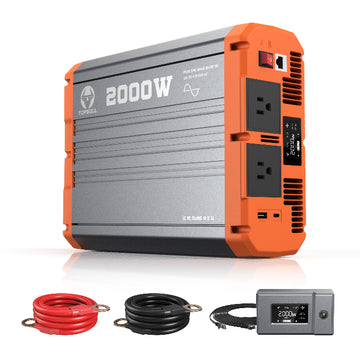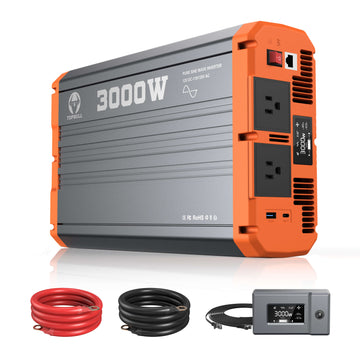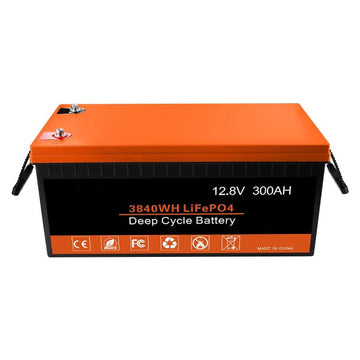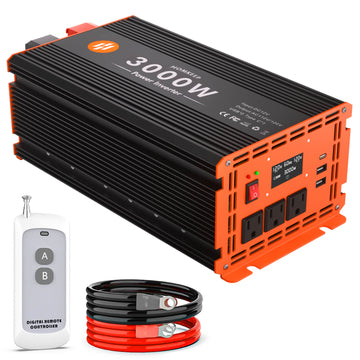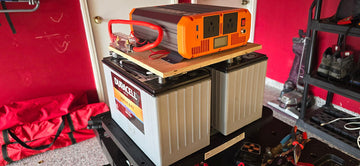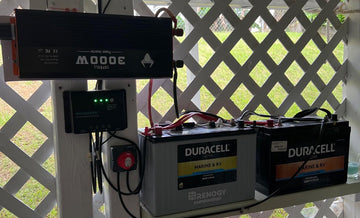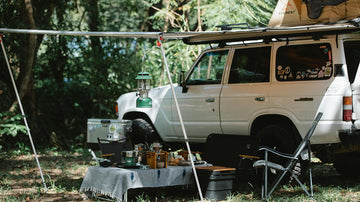In today's era of pursuing green and sustainable development, the application of renewable energy has become a global consensus. Solar energy, as one of the richest and cleanest energy sources on earth, is being widely used in various fields with its unique advantages. Meanwhile, lithium-ion batteries have become the preferred power source for portable devices and energy storage systems due to their high energy density, long life, lightweight and environmentally friendly features. Combining solar panels with lithium-ion batteries to realize direct conversion and storage of solar energy not only reduces dependence on fossil energy, but also provides reliable power support in remote areas or emergency situations. This article will delve into how to charge lithium-ion batteries with solar panels, revealing the mysteries of this green energy conversion and storage technology.
Working Principle of Lithium Ion Battery
The working principle of lithium-ion battery is based on the embedding and de-embedding process of lithium ions. When charging, the electric energy provided by the external power supply drives the lithium ions to detach from the positive electrode material, migrate to the negative electrode through the electrolyte and embed in the negative electrode material, forming the charging state; when discharging, the lithium ions detach from the negative electrode material, migrate to the positive electrode through the electrolyte and embed in the positive electrode material, releasing the electric energy. This process requires precise control of charging and discharging conditions to ensure safe and efficient battery operation.
What are the charging methods for lithium-ion batteries
Lithium-ion batteries can be charged in a variety of ways, designed to adapt to the needs of use in different scenarios, the following are some of the main charging methods:
1. Conventional plug-in charging
This is the most direct and common charging method, in which the battery is connected to a household or industrial electrical outlet through a dedicated charger or power adapter. The charger usually contains an intelligent control unit that monitors the battery status and automatically adjusts the charging voltage and current to ensure that the battery is charged under safe and efficient conditions.
2. USB charging
With the popularity of mobile devices, USB port charging has become a convenient option. Charging can be realized by connecting the device to a computer or other USB power adapter through a USB cable.The standard voltage of the USB port is usually 5V, and the current varies according to the demand of the device. This method is not only applicable to small devices such as smartphones and tablets, but is also gradually being applied to some small household appliances and wearable devices. Its advantage is that it is versatile and easy to carry and use.
3. Solar charging
Solar charging is a green way of utilizing renewable energy for charging. It relies on solar panels that convert solar energy into electricity, which is then charged via a charge controller or directly connected to a lithium battery. Solar charging systems can play an important role in areas without grid coverage or in outdoor activities such as camping, hiking, and workstations in remote areas. The advantages are that they are environmentally friendly, sustainable, and can be self-sufficient in the presence of sufficient light. However, the efficiency of solar charging can fluctuate depending on weather and light intensity, so it is often necessary to use it in conjunction with high-capacity batteries or energy storage devices to ensure a continuous supply of power.

How to Charge Lithium Batteries with Solar Panels
Charging lithium batteries with solar panels is an environmentally friendly and sustainable way of charging. The process is also relatively simple, but there are some technical details to consider. Below we will describe the components of a solar panel charging system and the steps to use it.
Components of solar panel charging system
- Solar Panel: Ensure that the solar panel has sufficient output power to match the charging requirements of the Li-ion battery. At the same time, consider the size, weight and portability of the solar panel for use in outdoor or mobile environments.
- Lithium Battery: Choose a lithium battery that is suitable for the output of the solar panel and make sure that the voltage, capacity and charging characteristics of the battery match the solar panel.
- Charge Controller: The charge controller is the key device that connects the solar panel to the Li-ion battery, which regulates the voltage and current output from the solar panel to protect the Li-ion battery from overcharging or undercharging. Choosing a charge controller with Maximum Power Point Tracking (MPPT) function can utilize the output power of the solar panel more effectively.
- Connection cable: Used to connect each component to ensure proper current flow.
Steps for charging lithium-ion battery with solar panel
- Preparation: Check the status of the lithium-ion battery and make sure the compatibility of the solar panel and charge controller.
- Install the solar panel: Choose a sunny place and make sure the panel is installed at the best angle to the sunlight.
- Connecting the charge controller: Connect the solar panel to the charge controller, make sure the connection is correct and avoid short circuit.
- Connect the lithium-ion battery: connect the charge controller to the lithium-ion battery according to the instruction manual, make sure the positive and negative poles are connected correctly.
- Monitor the charging process: During the charging process, check the charging status periodically and observe whether the charging indicator is normal.
What kind of solar panel can charge lithium-ion batteries
There are several factors to consider when choosing the right solar panel to charge lithium-ion batteries. Here are some key points to consider:
1. Power
- Wattage: Choosing the right power (wattage) is very important and is usually determined by the capacity (in Ah or Wh) of the Li-ion battery you need to charge. Generally speaking, the charging power should be at least 10% to 20% of the capacity of the LiPo battery.
- Charging speed: the higher the power, the shorter the charging time.
2. Conversion efficiency
- Efficiency level: The conversion efficiency of a solar panel refers to its ability to convert sunlight into electricity. Efficient solar panels make better use of sunlight and perform better especially in low light conditions.
3. Types
- Monocrystalline panels: usually have higher efficiency and a smaller footprint, but are more expensive.
- Polycrystalline panels: Slightly less efficient, but relatively inexpensive, suitable for projects with limited budgets.
- Thin-film panels: relatively inefficient, larger footprint, but perform better in low-light, cloudy conditions.
4. Weatherability
- Waterproof and weatherproof performance: panels with good waterproofing, corrosion resistance and durability should be selected to ensure that they can be used for a long time in outdoor environments.
- Wind resistance: especially in windy areas, wind resistance is also an important criterion for selection.
5. Output Voltage
- Compatibility: Ensure that the output voltage of the solar panel matches the input requirements of the lithium-ion battery and charge controller. Most Li-ion battery systems use 12V, 24V or higher, so make sure the output voltage of the solar panel is compatible.
6. Additional Components
- Charge Controller: When using solar panels, a suitable charge controller is usually required to ensure that the battery is not overcharged or over-discharged during the charging process. It is recommended to choose a charge controller with MPPT (Maximum Power Point Tracking) function, which can improve system efficiency.
In conclusion, when choosing solar panels for lithium-ion batteries, a comprehensive consideration of factors such as power, efficiency, weather resistance, output voltage and system compatibility can help you find the most suitable solution. This will ensure that you can effectively and safely utilize solar energy to charge lithium batteries.
Precautions when charging lithium batteries

When charging lithium batteries, in order to ensure the safety of the battery, extend the service life of the battery and maintain its optimal performance, you need to pay attention to the following matters:
1. Choose a suitable charger
- Matching: Ensure that the charger matches the parameters of the Li-ion battery, including voltage, current, and so on. Using a mismatched or unsuitable charger may lead to battery damage or safety issues.
- Reliable quality: Choose a reliable quality charger and avoid using chargers of poor quality or unknown sources to minimize safety risks.
2. Control charging time and power
- Moderate charging: Maintaining the power of lithium batteries between 10% and 90% is the most favorable for battery life. Avoid long time full charge or low charge state to reduce the aging speed of the battery.
- Avoid overcharging: Overcharging will cause irreversible damage to the lithium battery, and even cause safety accidents. Therefore, pay close attention to the state of the battery during the charging process and stop charging in time. Generally speaking, charging to 80% is enough to avoid filling the battery.
- Control the charging time: Master the charging time, and cut off the power in time after full. Keep charging for a long time will increase the battery loss.
3. Pay attention to the charging environment
- Temperature control: Charging should keep the temperature of the battery in the normal range, to avoid too high or too low temperature affects the battery performance. High temperature will accelerate the aging speed of lithium battery and damage the battery performance. Therefore, avoid placing the battery in a high temperature environment while charging, and do not expose the battery to high temperature for a long time.
- Avoid moisture: Moisture entering the battery will cause damage to the battery, so avoid immersing the battery in water or storing it in a humid environment.
4. Store and use the battery correctly
- Regular calibration of the battery level: The battery level display of lithium batteries may have errors, regular calibration of the battery level will help to accurately determine the battery usage time and remaining battery level.
- Reasonable storage: Li-ion batteries that are not used for a long time should be stored in a dry, ventilated and cool place, and try to keep the battery charge between 40% and 80%. Avoid high temperature, humidity and extreme cold when storing.
- Avoid frequent charging and discharging: Frequent charging and discharging will result in shorter battery life. Therefore, do not charge at random when the power is high, and do not empty the battery often.
5. Regular Inspection and Maintenance
- Check the condition of the battery: Check the battery regularly for any damage or deformation, if there is any problem, it should be replaced in time.
- Use a battery tester: You can use a battery tester and other tools to check the capacity and health of the battery, so that you can find problems in time and take appropriate maintenance measures.
FAQs
How long does it take for a solar panel to recharge a lithium battery?
Charging time depends on a number of factors, including the power of the solar panel, the capacity of the lithium battery, the intensity of the sunlight and the weather conditions. Generally speaking, higher power will shorten the charging time.
What power of solar panel is the most suitable for my lithium battery?
The power depends on the capacity of the lithium battery. Generally speaking, the power of your solar panel should be 10% to 20% of the lithium battery capacity. For example, if your LiPo battery capacity is 100Ah (ampere-hour), you can choose a solar panel with at least 10-20W.
What should I do if the weather is bad when charging with solar panels?
On cloudy or rainy days, the power generation efficiency of solar panels decreases. To ensure charging, you can consider a backup charging system, such as using a power adapter or generator for charging.
How do solar panels connect to lithium batteries?
Usually, you need to connect the solar panel to the lithium battery via a charge controller. When connecting, make sure the positive and negative terminals are connected correctly to avoid short circuiting or damaging the device.
Do I need a charge controller? Why?
Yes, a charge controller is necessary. It can regulate the current and voltage to prevent over-charging and over-discharging of the lithium battery and protect the life of the battery.
Can I use more than one solar panel at the same time?
Yes, multiple solar panels can be connected in parallel or series to increase the overall voltage or current output. But make sure you have the proper charge controller to handle the increased power.
What is the optimal operating temperature for charging lithium batteries?
Lithium batteries work best at temperatures between 20°C and 25°C. Avoid charging at extreme temperatures above 45°C or below 0°C to protect the performance and life of the battery.
What should I do if the lithium battery no longer accepts a charge?
If the lithium battery is no longer charging, it may be due to aging or damage. Please follow local battery recycling regulations and take the old battery to a professional recycling organization for disposal.

